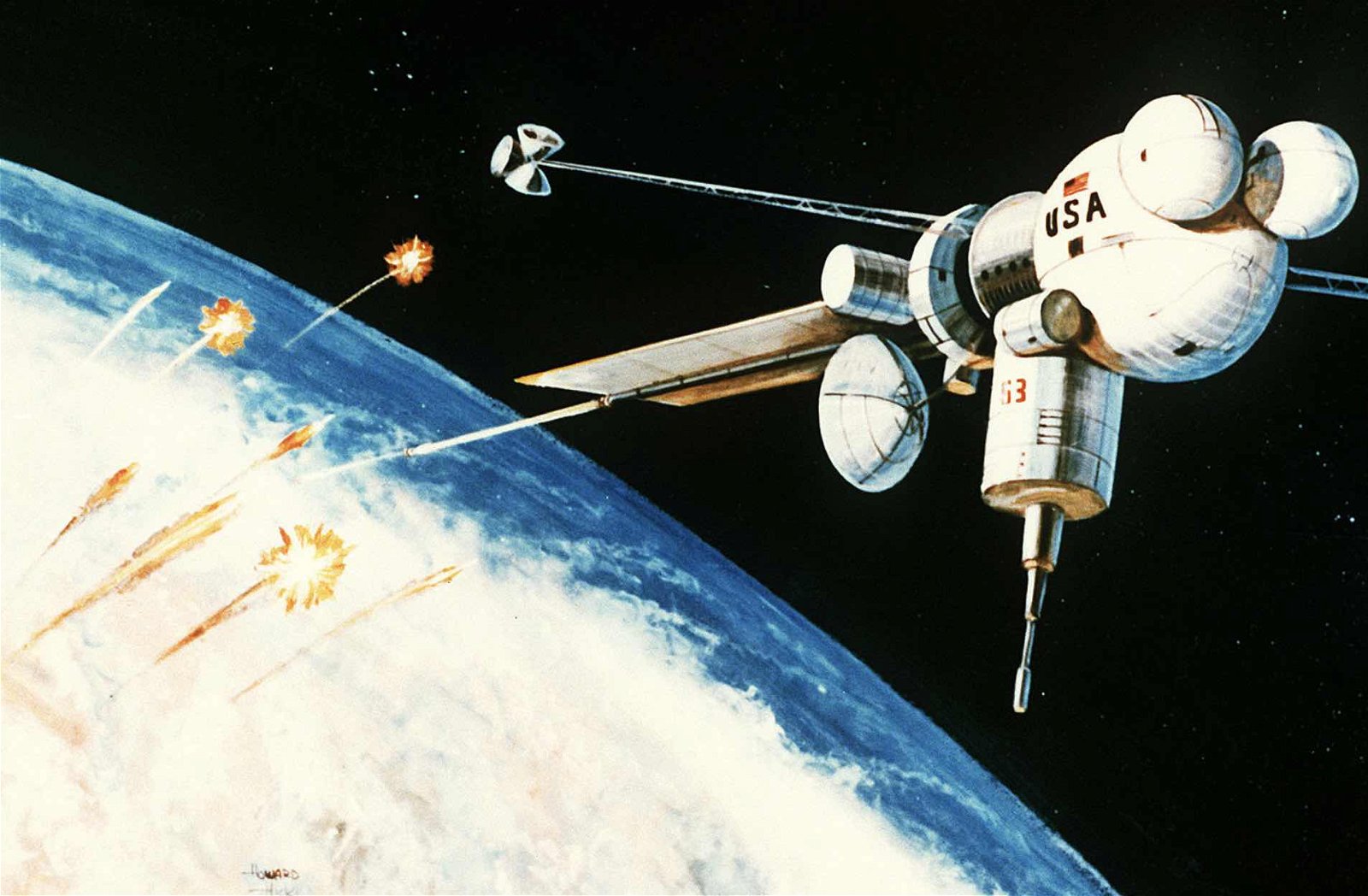As nations delay regulating the use of force in space, a new analysis says attacks on satellites and similar acts of space warfare may fall under existing international agreements.
Dr. Chris O’Meara of the University of Exeter Law School recently produced a new survey applying current international law to anti-satellite weapons. By investigating where use-of-force laws developed for conventional warfare may apply to satellites, O’Meara has illuminated the heavy burden that would apply to justifying such action in space.
Old Laws Stretched onto a 21st-Century Canvas
In 1957, anxious Americans living under the bomb could walk out onto their porch in the evening and, under the right conditions, observe the Cold War’s latest symbol of existential terror in the night sky.
The US Government was powerless to do anything as the Soviet Sputnik satellite looked down upon them, and fears of space-based weapons, especially the prospect of nuclear ones, ultimately led to agreements in the 1960s dealing with the militarization of space.
Yet in our modern world, the fibers of which are held together by the network of satellites now above our heads, very little progress has been made on regulating space warfare, despite rapid advances in such weaponry by the United States, Russia, China, and India.
Today, amidst what many scholars identify as a new Cold War, the chances of breaking the deadlock on meaningful international space warfare agreements are low. While our leading technology may be the frontier of human achievement, the same age-old concerns about civilian casualties and third-party consequences still apply.
Some attempts have been made to extend International Humanitarian Law (IHL) to cover this area, but many questions remain. Seeking to fill the void, O’Meara has turned to jus as bellum (JAB), or “right to war,” which is the branch of law concerned with the legitimacy of military action. By applying existing JAB to anti-satellite weapons (ASAT), O’Meara hopes to shed new light on this neglected area of policy.
Necessity, or “In Space, No One Can Tell the Difference”
Concepts of proportionality and necessity found in the current understanding of JAB apply to ASAT warfare as well. In fact, NATO views space as simply another operational domain alongside air, land, sea, and cyberspace. The first element considered in any armed conflict is necessity; the use of arms is only acceptable if there is no peaceful means of self-defense. The complicating wrinkle to necessity involves a return to considering IHL with its designation of “military objectives.”
Satellite technologies muddy the already murky area of space policy since many simultaneously function as vital components to civilian communications and infrastructure but also as an aid to warfighters. For instance, O’Meara reminds us that civilian Starlink satellites are crucial to military communications in the ongoing Ukraine conflict. Additionally, a single satellite also may hold multiple payloads that combine both civilian and military technologies. In short, identifying satellites as exclusively intended for military use is often a tricky proposition.
Once the hurdle of necessity has been successfully cleared, proportionality must be carefully considered in any military strike. When deciding if an attack is proportional, the actor must weigh not only if it is strictly necessary for self-defense but also its potential for causing harm to civilians or other states. In a globalized society dependent on satellite communications for many facets of modern life, any action in space can quickly lead to cascading effects for civilians and the international community. The sheer congestion presented by as many as 9,900 satellites currently being tracked in orbit already sounds like a lot, but it is expected to grow to as many as 24,500 by 2031.
O’Meara emphasizes that the difficulties in ensuring civilian satellites are not accidentally impacted become a proportionality nightmare and illuminates the role of satellite communications in our modern way of life.
Catastrophic Disruption
Not being able to make phone calls or send text messages would constitute a significant disruption for many. However, an even more significant interruption in position, navigation, and timing (PNT) could be catastrophic. The same PNT systems that hold up the GPS system also maintain Coordinated Universal Time (UTC). O’Meara lists a bevy of areas in which PNT is “indispensable,” including financial markets, banking systems, power grids, emergency services, and more.
“[F]or JAB proportionality, the potential repercussions of these acts on Earth are too varied and potentially too significant in any meaningful way that might justify the pursuit of a defensive purpose,” O’Meara says, adding the caveat that “as with nuclear weapons… where the survival of the state is at stake.” In short, ASAT weapons are too dangerous and unpredictable to be used for defensive purposes in most instances.
Concluding his analysis, O’Meara makes a final plea for peace. Lacking cooperation on limiting ASAT weapons, humanity only needs to turn to accepted norms to see ASAT weapons as off-limits in most conflicts.
All countries should be able to continue peaceful space exploration and benefit from their satellites, he says. Ultimately, exploring how new conflicts can be viewed through old lenses may be the key to maintaining peace.
Ryan Whalen is a writer based in New York. He has served in the Army National Guard and holds a BA in History and a Master of Library and Information Science with a certificate in Data Science. He is currently finishing an MA in Public History and working with the Harbor Defense Museum at Fort Hamilton, Brooklyn.

